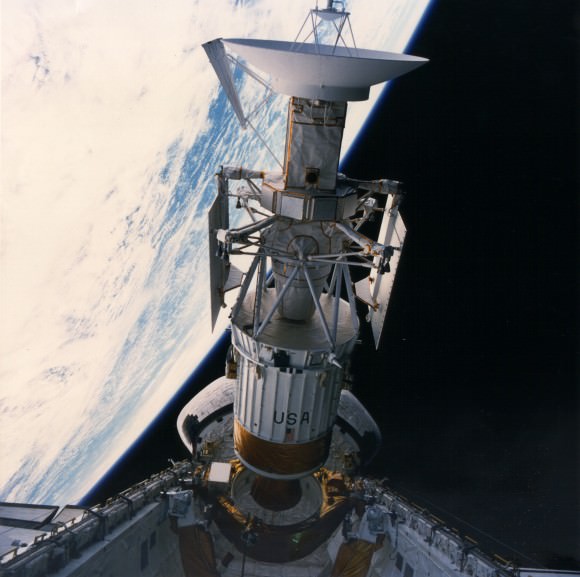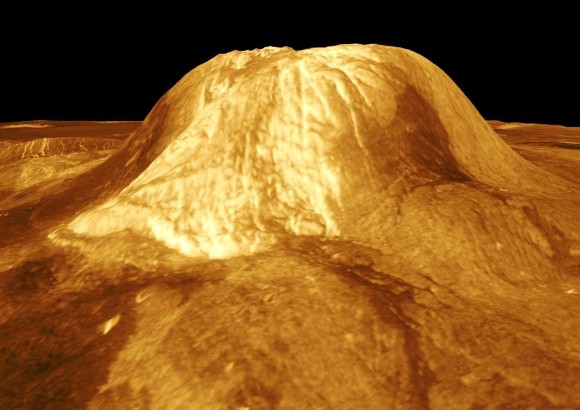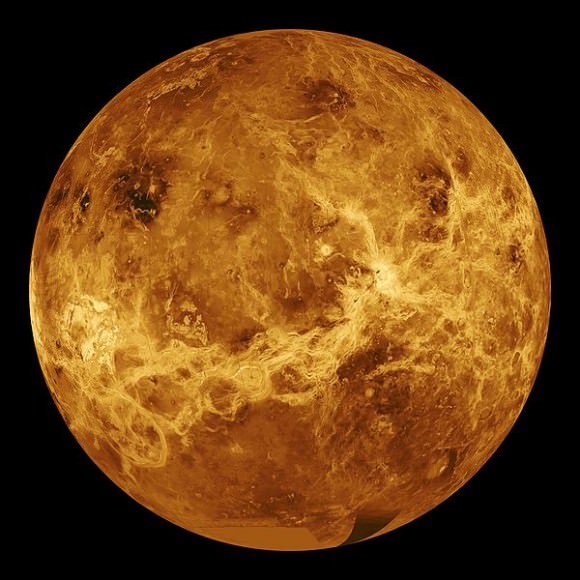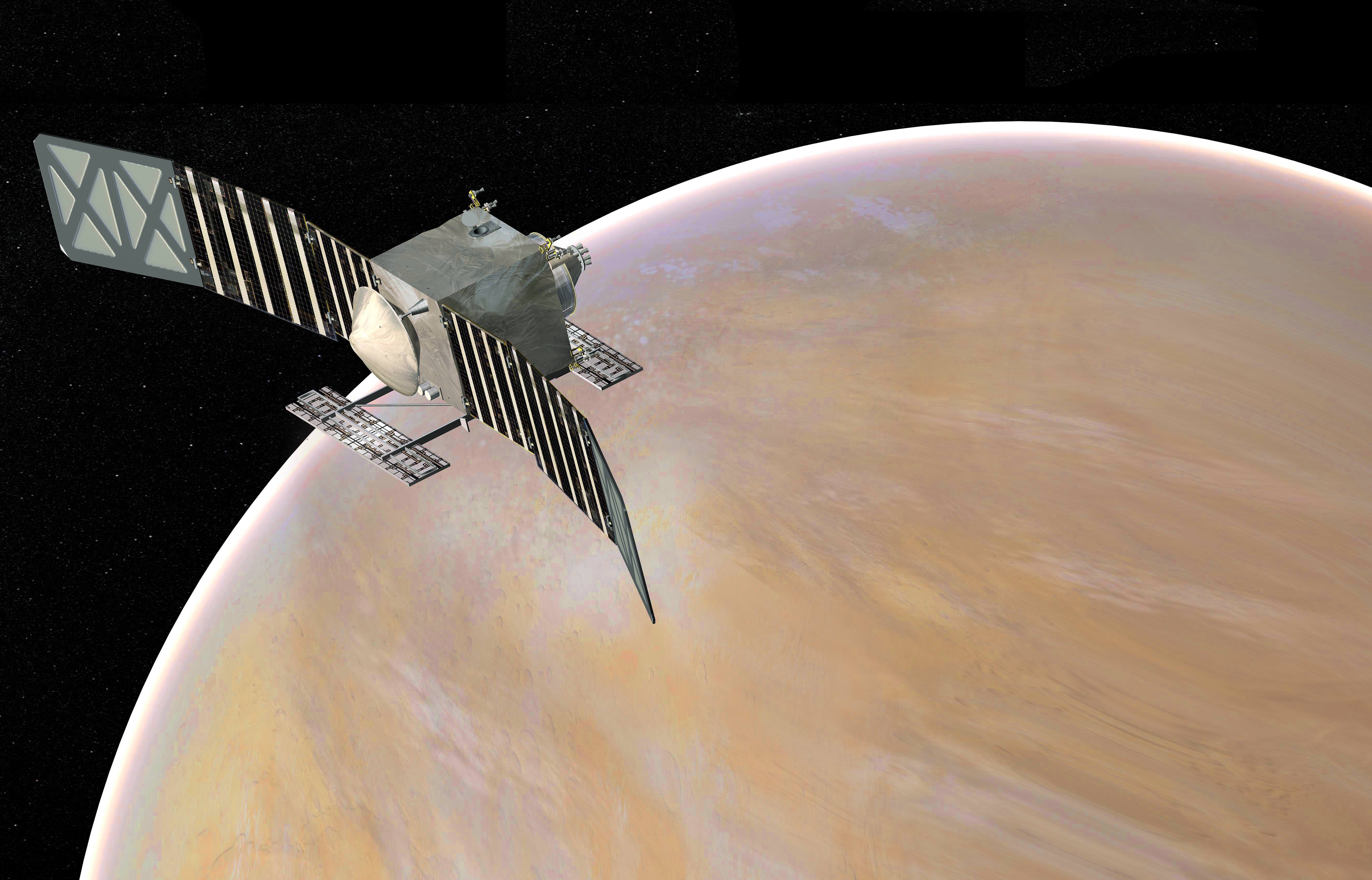In February of 2014, NASA’s Discovery Program asked for proposals for the their 13th mission. Last week, five semifinalist were selected from the original 27 submissions for further investigation and refinement. Of the possible missions that could be going up, two involve sending a robotic spacecraft to a planet that NASA has not been to in decades: Venus!
The first is the DAVINCI spacecraft, which would study the chemical composition of Venus’ atmosphere. Meanwhile, the proposed VERITAS mission – or The Venus Emissivity, Radio Science, InSAR, Topography, and Spectroscopy spacecraft – would investigate the planet’s surface to determine just how much it has in common with Earth, and whether or not it was ever habitable.
In many respects, this mission would pick up where Magellan left off in the early 1990s. Having reached Venus in 1990, the Magellan spacecraft (otherwise known as the Venus Radar Mapper) mapped nearly the entire surface with an S-band Synthetic Aperture Radar (SAR) and microwave radiometer. From the data obtained, NASA scientists were able to make radar altimeter measurements of the planet’s topography.

These measurements revolutionized our understanding of Venus’ geology and the geophysical processes that have shaped the planet’s surface. In addition to revealing a young surface with few impact craters, Magellan also showed evidence of volcanic activity and signs of plate tectonics.
However, the lack of finer resolution imagery and topography of the surface hampered efforts to answer definitively what role these forces have played in the formation and evolution of the surface. As a result, scientists have remained unclear as to what extent certain forces have shaped (and continue to shape) the surface of Venus.
With a suite of modern instruments, the VERITAS spacecraft would produce global, high-resolution topography and imaging of Venus’ surface and produce the first maps of deformation and global surface composition. These include an X-band radar configured as a single pass radar interferometer (known as VISAR) which would be coupled with a multispectral NIR emissivity mapping capability.

Using these, the VERITAS probe will be able to see through Venus’ thick clouds, map the surface at higher resolution than Magellan, and attempt to accomplish three major scientific goals: get a better understanding of Venus’ geologic evolution; determine what geologic processes are currently operating on Venus (including whether or not active volcanoes still exist); and find evidence for past or present water.
Suzanne Smrekar of NASA’s Jet Propulsion Laboratory (JPL) is the mission’s principal investigator, while the JPL would be responsible for managing the project. As she explained to Universe Today via email:
“VERITAS’ objectives are to reveal Venus’ geologic history, determine how active it is, and search for the fingerprints of past and present water. The overarching question is ‘How Earthlike is Venus?’ As more and more exoplanets are discovered, this information is essential to predicting whether Earth-sized planets are more likely to resemble Earth or Venus.”

In many ways, VERITAS and DAVINCI represent a vindication for Venus scientists in the United States, who have not sent a probe to the planet since the Magellan orbiter mission ended in 1994. Since that time, efforts have been largely focused on Mars, where orbiters and landers have been looking for evidence of past and present water, and trying to piece together what Mars’ atmosphere used to look like.
But with Discovery Mission 13 and its five semi-finalists, the focus has now shifted onto Venus, near-Earth objects, and a variety of asteroids. As John Grunsfeld, astronaut and associate administrator for NASA’s Science Mission Directorate in Washington, explained:
“The selected investigations have the potential to reveal much about the formation of our solar system and its dynamic processes. Dynamic and exciting missions like these hold promise to unravel the mysteries of our solar system and inspire future generations of explorers. It’s an incredible time for science, and NASA is leading the way.”
Each investigation team will receive $3 million to conduct concept design studies and analyses. After a detailed review and evaluation of the concept studies, NASA will make the final selections by September 2016 for continued development. This final mission (or missions) that are selected will launcd by 2020 at the earliest.


I just had this dialog with an on-line friend as to “why we’ve spent so much time on Mars and not on Venus?”
Simple – we can actually land on Mars, take samples, drill and do actual tests on the surface. Rovers can last many months to several years on Mars. Venus, hours, only a few hours at best.
Sure, orbiting probes can tell us a lot of things. But let’s face it – Ground Based Exploration tells us a lot more, a whole lot more.
Also for the ‘bang for the $$’s” – a few weeks or months around Venus and that $$ is done. That’s it ….. where the $$ for ground based exploration can have a much better return for the $$$.
jjb, agreed!
A balloon-based suite, or really anything that gets us physically into the atmosphere might be better than an orbiter, just because then you can take actual samples from the upper atmosphere. Also, you’re closer to the actual ground, who knows, maybe some of the products of Venusian volcanism can be sampled directly as well?
Of course, such a suite would have to be really high up to be out of the way of the heat & pressure lower down, and the acid clouds & weather higher up (maybe make the outer layer out of Pyrex…? ^_^;;;), and the winds might make observations of the ground too unstable to be worth dipping out of orbit for in the first place…
Anyway, hostile as it is, I’m thrilled we might be going back to this world!
Since almost nothing is known about Venus, any kind of mission would revolutionize the understanding of it. It is the most Earth like planet and its atmosphere is of the kind which would be among the first the be detected on terrestrial exoplanet. An atmospheric, and even orbiting, mission could perform seismic investigations(!) And developments in heat resistant technology may soon make a long term surface mission feasible. Some qualified talks about it:
https://www.youtube.com/user/KISSCaltech/search?query=venus
Line 5, paragraph one: correct ‘to a planet’ from a plant?
What would a Venus Rover look like?
The thing has to survive at about 480C. This is about Gas Mark 25, if ovens went up that far. If it was in the dark at this temperature, you might see it glow a dim red. Conventional solar panels would not work. Wind power might work, but it would be easily damaged. There is lots of heat, but everything is probably near equilibrium at the surface, so there is no easy way to generate power from it. Probably the safest option would be to use an internal nuclear generator, and not depend on the outside at all.
Most electronics will not work at these temperatures. It can be done, but you are probably better off air-conditioning the inside of the crawler. This would take a lot of the power, but all the electronics and motors would be more efficient. You would then surround it with a lot of insulation. The cameras might look through protective windows like furnace cameras. The radio antenna would have to be on the outside, so that would have to be tough and conductive.
Hard but not impossible. But I think you could make something that could last for months or years.
Single instruments, like seismographic ones piercing down and working together with an orbiter, should be easier to protect and operate than complex general purpose rovers. I would think that seismics is the most important thing to do on the ground of Venus, so then lets do only that on the ground. Much of the rest can be done in the upper atmosphere or from orbit.
Active cooling and insulation may not be necessary. NASA has (circa 2006) demonstrated motors, electronics and sensors capable of prolonged operation in 500°C environments. With plenty of wind power available and a relatively flat surface, a Venus rover may look like a land sailing vehicle with a pressure vessel. However, what may be needed is the most sophisticated electronics such as processors and data storage systems to be ‘outsourced’ to an airborne vehicle, flying high above the rover at a cooler altitude.
Picking a landing spot might be a bit of a challenge.